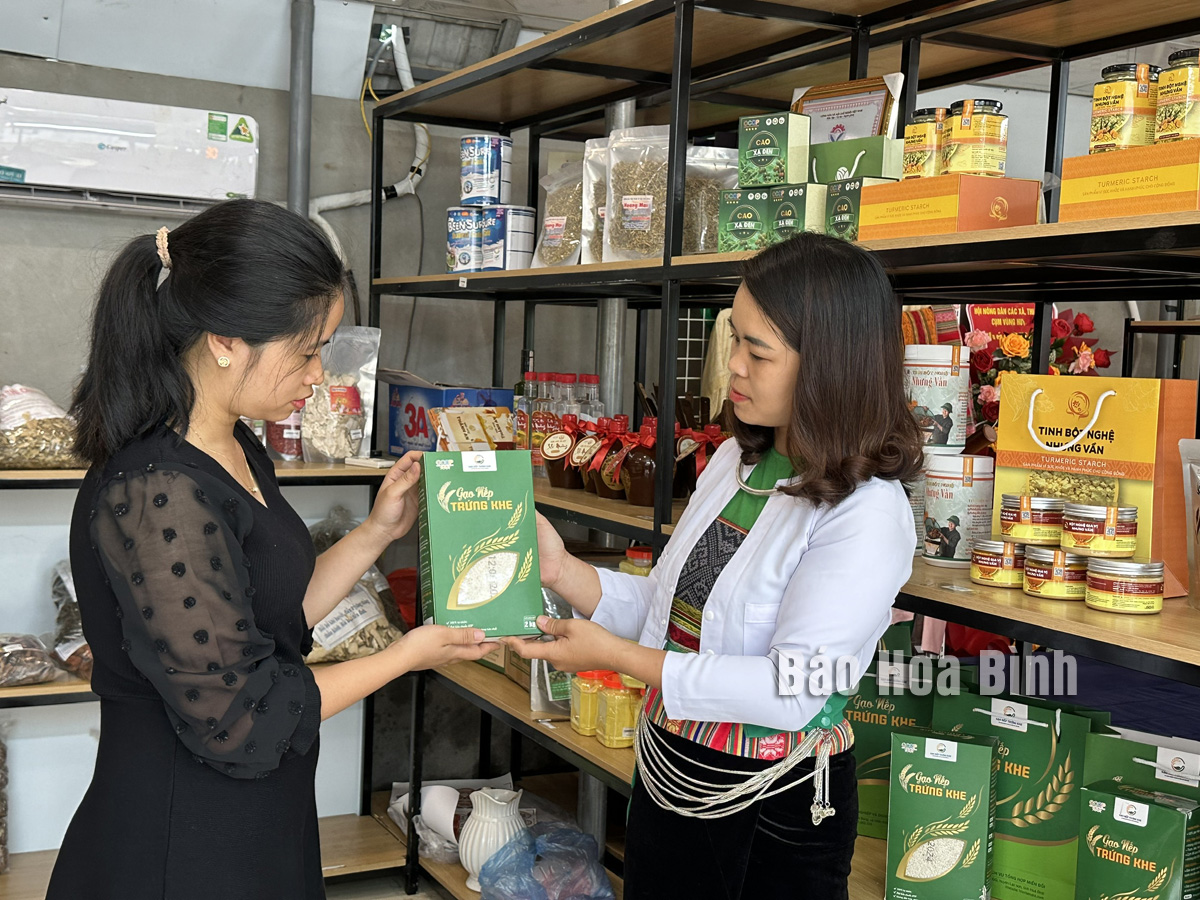



With the provincial industry and trade sector’s support, Trung Khe sticky rice from Lac Son district has gained much-needed visibility, reaching a wider consumer base. The product has been introduced on e-commerce platforms and showcased at trade fairs in and outside the province.
Supporting OCOP products
The One Commune, One Product (OCOP) programme has been one of the key drivers for enhancing the value and reputation of local agricultural products. Over the years, Hoa Binh’s industry and trade sector has been dedicated to assisting businesses and cooperatives, helping them improve product quality, packaging, and labelling, while also helping them expand their market reach.
The sector has also been instrumental in setting up designated points for displaying and selling OCOP products, making them more accessible to consumers. Furthermore, the provincial Department of Industry and Trade has collaborated with various organisations to promote local products via trade fairs and events, thus offering these goods a chance to access a wider and more diverse market.
In 2024, the province officially recognised 20 exemplary rural industrial products, including provincial and national-level products.
Dinh Cong Thuan, Director of Green Life Cooperative in Hop Tien commune, Kim Boi district said that thanks to the support from the OCOP programme and the provision of equipment and market access by the local Department of Industry and Trade, the cooperative’s wild honey product has not only established a solid brand with stable domestic sales but is now also being exported to the UK. This has provided a huge incentive for the establishment to continue investing in product quality improvement, Dung said.
Alongside, the sector has also focused on providing training and workshops for local production facilities, addressing topics such as marketing, branding, and the application of technology in production. Bringing OCOP products to e-commerce platforms has become a crucial step in enhancing market access for local products.
Boosting consumption, securing sustainable markets for farm produce
Recognising that consumption is a key factor in ensuring sustainable agricultural development, the Department of Industry and Trade has actively rolled out a series of trade promotion activities to connect supply with demand. From 2021 to 2025, the province has successfully organised five trade fairs in northern Vietnam. These events showcased and promoted the region’s unique products across various provinces and cities. Over 100 local businesses participated, with more than 150 booths displaying their products.
In parallel, it has supported businesses and cooperatives in listing over 79 products from 33 enterprises on prominent e-commerce platforms such as Postmart.vn, Voso.vn, and Sendo.vn. The use of digital technology has allowed these products to access a wider audience, particularly during the challenging period of the COVID-19 pandemic.
Duong Quoc Thang, Vice Director of the department, highlighted that developing modern distribution channels, ranging from trade fairs to e-commerce platforms, has been a pivotal step in enhancing the value of agricultural products in Hoa Binh.
Alongside, the department has also launched a project to upgrade and renovate the electricity grid in remote areas, which has successfully improved the rural electricity grid, meeting 99.98% of power demand, thus significantly enhancing the quality of life and production capabilities in rural areas.
Despite these achievements, challenges remain in advancing agriculture and promoting the consumption of local agricultural products. According to Thang, the scale of production among local agricultural facilities remains small, product quality is inconsistent, and the implementation of quality management systems is still limited. These issues hinder the integration of local products into modern distribution networks as well as their export potential.
In the coming time, the department plans to continue supporting businesses and cooperatives in improving product quality and expanding market access, while advising provincial authorities to prioritise investments in infrastructure that supports both production and the consumption of local products, particularly in remote areas, so as to contributing to building new-style rural areas, enhancing the livelihoods of local residents, and fostering sustainable economic growth in the province.